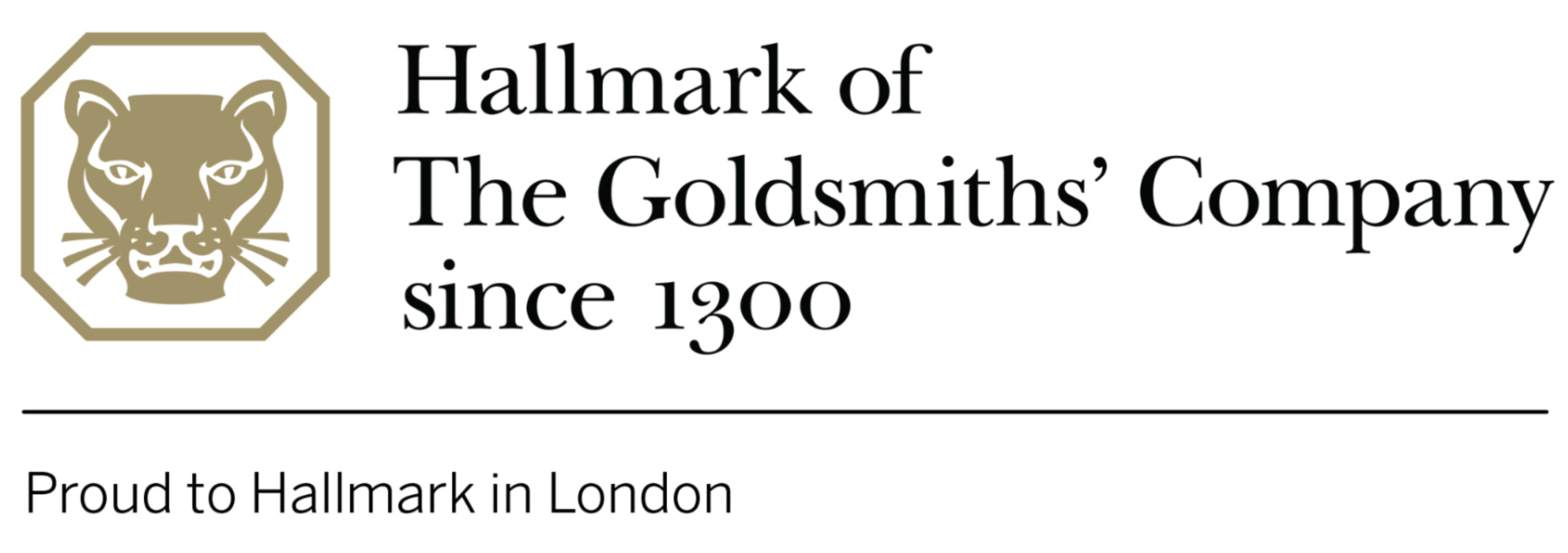Hallmarking
Why Hallmark?
It is a legal requirement in the UK for jewellers to have their work in precious metals hallmarked if it exceeds a certain weight. For Sterling Silver, this requirement applies to any piece weighing over 7.78g. Goldsmiths’ Company Assay Office in London mark my pieces with full traditional hallmarks. The Goldsmiths' Assay Office is the oldest in the UK, dating back to the 14th century when hallmarking began. You can read more on the fascinating history of hallmarking on the London Assay Office’s website.
The purpose of a hallmark is not only to indicate the purity of the precious metal being used but also to guarantee the provenance of the piece by providing information about where it was hallmarked, its composition, creation date, and the creator. If you are examining jewellery pieces, be sure to inquire about the hallmarks, as they are an integral part of the making process.
A traditional British hallmark consists of Five elements:
The Maker’s Mark
This is a unique mark that represents the brand or individual who created the piece and sent it in for hallmarking. It’s made up of the initials of that person or company inside a shape. When a jeweller creates a punch with the Assay Office, it represents their individual mark and joins a register of makers that stretches back for centuries into the history of British metalsmithing. My Maker’s Mark is ‘VC’ which stands for my maiden name of Victoria Chapman. Having chosen to take my husbands name of Phillips when I married I wanted to continue my own family name on my work, particularly poignant as I am one of 3 daughters and am aware that my father’s family name is not being continued down this branch of the family.
Millesimal Fineness Mark
This mark tells you what quality, or purity, the precious metal is in a numerical format that represents parts per thousand. Jewellery is seldom made of pure precious metal, a mixture of metals (alloy) is needed to produce durability and desired colour. As my work is in Sterling Silver you will see the number 925 in the hallmark.
Date Letter Mark
The date letter represents the year the piece was created and hallmarked. This list of recent date letters represents (from left to right): 2010, 2011, 2012, 2013, 2014, 2015, 2016
Traditional Fineness Mark
This tells you which precious metal your piece is made of – sterling silver, gold, palladium or platinum (as pictured, left to right)
Assay Office Mark
This is the mark that tells you which British Assay Office has tested and hallmarked the piece. London’s Goldsmiths’ Company Assay Office is represented by the image of a leopard’s head (the town mark for London).
The other three current British Assay Office’s marks include an anchor for Birmingham, a rosette for Sheffield (pre-1974 this was a crown), and a castle for Edinburgh.
Silver Anvil Jewellery Hallmarking
The traditional fineness mark and the date mark are no longer compulsory hallmarks but I get full traditional hallmarks on my pieces. I think the traditional marks are very important, particularly the date stamp so that the Antiques Road Shows of the future can glean full information from your heirlooms!
In this example of my work from left to right, you can see my makers mark ‘VC’, the Lion representing Sterling Silver, 925 representing the fineness of Sterling Silver, the Leopard Head of London and finally the date stamp of ‘V’ which is 2020.
I sometimes incorporate the hallmark into the design of the piece; as in the name plate of the boat on my Canal Houses piece.
HallMarKing Special Requests
Some clients request that the hallmark is a feature for their pieces of jewellery. The assay office can do display marks which are larger than usual and are offered in several arrays.











